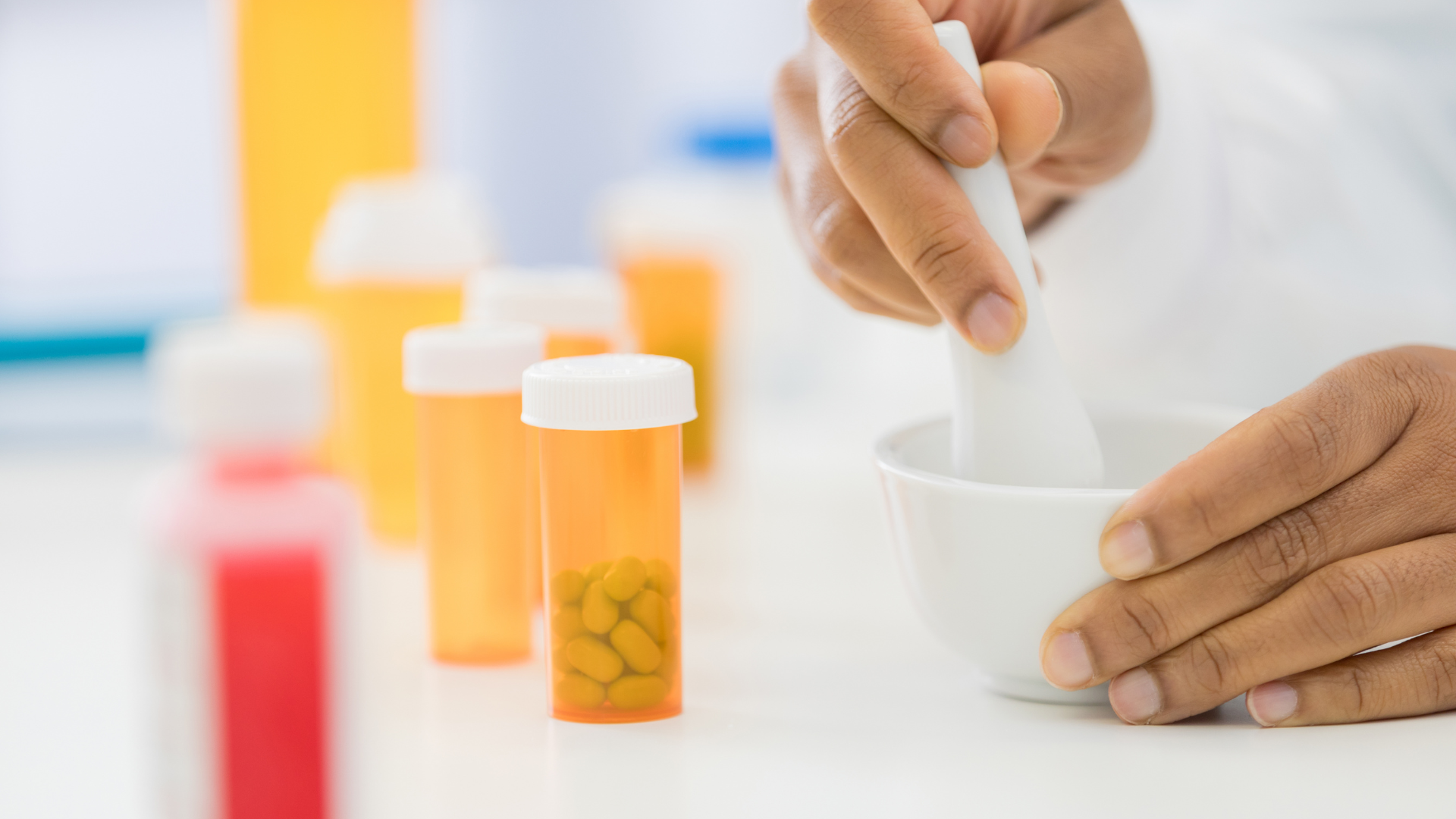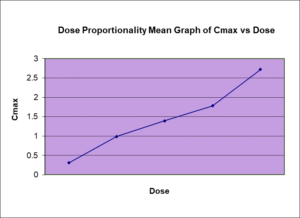Navigating Compounding in Early Phase Drug Development and ADF Studies: Techniques, Regulatory Considerations, and Practical Approaches

Drug compounding, in the context of Phase 1 and early-phase drug development, is the process of preparing customized investigational drug formulations from individual ingredients or components. During these early stages of drug development, the pharmaceutical compound may only be available as a raw powder or might not yet be optimized in terms of solubility, stability, or other physicochemical properties. Drug compounding allows researchers and pharmacists to create a suitable formulation for administration to study participants while ensuring that the investigational drug’s safety, efficacy, and dosage are accurately maintained.
In early-phase drug development studies, drug compounding may involve working with the raw powdered form of a drug, which may not be soluble or may require further optimization. Pharmacists skilled in drug compounding can employ various techniques to improve solubility, such as utilizing solubilizing agents, altering pH, or creating solid dispersions. These methods help facilitate drug administration and enhance the drug’s bioavailability, making it more effective and easier to study.
In the context of abuse-deterrent formulations (ADFs), as required by the FDA, drug compounding plays a unique role. ADFs are designed to reduce the potential for misuse or abuse, often by incorporating physical or chemical barriers that make it difficult to tamper with or alter the drug’s intended release mechanism. During human abuse liability (HAL) studies, compounding pharmacists may use techniques to “defeat” these ADF technologies, simulating the methods that recreational drug abusers might employ.
These techniques could involve the use of tools, solvents, or other methods that alter the drug’s properties or release characteristics. By mimicking real-world scenarios, these studies help evaluate the effectiveness of ADFs in deterring abuse.
The rest of this blog will be structured around these two themes: compounding for early-phase clinical studies, including solubility and stability issues, and compounding for ADF and HAL studies, focusing on techniques used to mimic recreational drug abusers’ methods. In the following sections, we will delve deeper into each theme, discussing the challenges, techniques, equipment, and regulatory considerations associated with drug compounding in Phase 1 and early-phase drug development.
Drug Compounding in Early-phase Drug Development
Advantages of Drug Compounding in Early-phase Drug Development
In early-phase drug development, drug compounding can offer significant advantages in terms of cost and time savings by avoiding certain Good Manufacturing Practice (GMP) requirements. GMP preparation involves strict quality control procedures, specialized facilities, and extensive testing, which can be both time-consuming and expensive. By employing compounding, clinical pharmacology units can receive GMP drug substance while bypassing the need for GMP drug product, which streamlines the early-phase drug development process.
In Canada, drug compounding is permitted as long as the drug is prepared for individual participants and not in bulk. This regulatory flexibility allows for a more efficient approach to early-phase drug development. The advantages of using drug compounding in this context include:
-
- Cost savings: Drug compounding can help avoid the high costs associated with GMP drug product manufacturing, as the process is less resource-intensive and does not require the same level of specialized facilities or equipment.
- Time savings: By bypassing some GMP requirements, compounding can significantly reduce the time it takes to prepare a drug for early-phase drug development. This enables researchers to initiate trials more quickly and potentially move more quickly to the Phase 1 development.
- Flexibility in formulation development: Drug compounding allows for the preparation of early formulations that may not yet be optimized for solubility, stability, or other properties. This enables researchers to test and refine formulations more efficiently, leading to the development of an optimal final formulation.
- Customization for individual participants: Drug compounding enables the preparation of customized formulations for individual study participants, ensuring that each participant receives an accurate dose of the investigational drug.
By leveraging the advantages of drug compounding in early-phase drug development, researchers and pharmacology units can save time, reduce costs, and ultimately accelerate the process of developing a drug.
Equipment for Early Phase Drug Compounding
In a clinical pharmacology unit’s pharmacy, various equipment and techniques are used for compounding in early-phase drug development. Common tools include mortars and pestles, electronic scales, capsule filling machines, and hotplates or magnetic stirrers for heating and mixing solutions. These tools are essential for accurately weighing, measuring, and mixing drug substances and excipients to create the desired drug formulations.
In early-phase drug development, drug compounding requires a range of specialized equipment designed to ensure accuracy, precision, and safety throughout the process. Typical drug compounding equipment includes:
-
- Analytical balances: High-precision scales are essential for accurately weighing drug substances and excipients, ensuring that the correct amounts of each ingredient are used in the formulation.
- Mortars and pestles: These tools are used for grinding, mixing, and triturating powders and solid ingredients, facilitating uniform distribution and consistency within the formulation.
- Measuring devices: Graduated cylinders, pipettes, and syringes are crucial for accurately measuring liquids and solutions, allowing for precise and consistent dosing.
- Mixing apparatus: Equipment such as magnetic stirrers, vortex mixers, and homogenizers are employed to mix and blend ingredients, ensuring the formulation is homogeneous and stable.
- Safety equipment: Personal protective equipment (PPE), such as gloves, masks, and goggles, is necessary to protect compounding personnel from exposure to potentially hazardous substances and to maintain aseptic conditions when required.
Using this specialized equipment, compounding pharmacists can prepare customized formulations tailored to the needs of early-phase clinical studies, ensuring the accurate and consistent delivery of investigational drugs to study participants.
Drug Compounding for ADF Manipulation
Equipment and Techniques for ADF manipulation
Abuse-deterrent formulations (ADFs) are designed to prevent or limit the manipulation of drugs for illicit purposes. However, during Human Abuse Liability (HAL) studies, it is necessary to employ techniques that circumvent these ADF technologies to evaluate their effectiveness in deterring abuse. The FDA guidance states that the technique chosen for HAL studies should be determined during Category 1 in vitro testing, wherein only the method that demonstrates the highest drug release (opioid or stimulant) is used for the Category 2 and/or 3 clinical studies.
Commonly used techniques and equipment to defeat ADF technologies include:
-
- Mechanical manipulation: Crushing, grinding, or cutting the drug using tools such as mortars and pestles, pill crushers, or cutting devices to break down the physical barriers of the formulation.
- Chemical extraction: Using solvents, such as water, alcohol, or other chemicals, to dissolve or extract the active ingredient from the ADF. This may involve mixing, heating, or cooling the formulation and using equipment like beakers, stirring rods, or syringes for the extraction process.
- Thermal manipulation: Applying heat, such as using a microwave, oven, or open flame, to alter the drug’s physical properties and release the active ingredient. Caution must be taken to ensure the safety of the compounding personnel and to avoid damaging the active ingredient.
- Elution or filtration: Techniques such as elution or filtration can be used to separate the active ingredient from the ADF components. This may involve the use of filters, sieves, or chromatography equipment.
It is essential to note that the chosen technique should be carefully considered, avoiding compromising the safety and efficacy of the investigational drug. Furthermore, pharmacists and researchers must adhere to regulatory guidelines when employing these techniques to ensure the integrity of the HAL study and the safety of study participants. By understanding and simulating the methods used by recreational drug abusers to manipulate ADFs, researchers can evaluate the effectiveness of these formulations in deterring abuse and develop safer medications.
In a clinical pharmacology unit’s pharmacy, various tools and equipment may be used to mimic the techniques employed by recreational drug abusers to manipulate abuse-deterrent formulations (ADFs). These tools, which are readily accessible to the public, can provide valuable insights into the potential weaknesses of ADF technologies. Some commonly used equipment and techniques in the clinical pharmacy setting include:
-
- Coffee grinders: Coffee grinders can be used to grind tablets or capsules into fine powders, bypassing the physical barriers of ADFs. These devices are widely available and can quickly reduce the size of the formulation, which may then be inhaled, ingested, or dissolved for administration.
- Mortar and pestle: Similar to coffee grinders, mortars and pestles can be used to crush tablets or capsules into powders, facilitating the release of active ingredients from ADFs.
- Knives and razor blades: Sharp cutting tools, such as knives or razor blades, can be used to cut, slice, or scrape the drug formulations to remove coatings or alter their physical properties. This method can potentially undermine the ADF technology, making it easier for abusers to access the active ingredient.
- Household spoons: Spoons can be used to crush, grind or dissolve tablets or capsules, allowing the active ingredient to be separated from the ADF components.
- Syringes: Syringes can be used to extract dissolved drug solutions from ADFs or to administer manipulated drugs through injection.
- Heating devices: Devices like microwaves, ovens, or open flames can be used to heat drug formulations, changing their physical properties and potentially releasing the active ingredient.
When using these tools and techniques in a clinical pharmacy setting, it is important to maintain safety precautions and adhere to regulatory guidelines to protect both the compounding personnel and study participants.
FDA Guidance on Selecting Manipulation Techniques
Per the FDA guidance, the technique chosen to use for the Human Abuse Liability study is determined during Category 1 in vitro testing. Only the technique that shows the greatest ability to release most of the drug (opioid or stimulant) is then used in the clinic pharmacy for Category 2 and/or 3 testing. This ensures that the most effective method for circumventing the ADF technology is employed during the clinical study, providing valuable insights into the potential weaknesses of the formulation.
Regulatory Considerations and Limitations of Drug Compounding
Stability and Documentation
Drug Compounding in early-phase drug development and for ADF manipulation has its limitations and regulatory considerations. Both regulatory agencies and researchers must carefully address these concerns to ensure the safety, efficacy, and stability of the compounded drug product.
-
- Limited stability: Unlike GMP drug products with well-established stability profiles, compounded formulations often have limited information on their stability. The regulatory expectation is that no batch is made, and the product is prepared individually for each participant. In most cases, the compounded drug is prepared just before dosing.
- Note; preparing the drug up to 24 hours before administration is often acceptable if supportive information is provided to demonstrate stability and lack of contamination. In the past, longer windows of up to seven days has been accepted and may be acceptable when stability data is provided for the compounded formation. The longer window can aid in the logistics of dosing for multiple dose studies.
- Regulatory documentation: Health Canada, for example, requires that the clinical trial protocol clearly states that drug compounding will be used, the specific technique employed, and the timeframe for drug preparation before dosing. This ensures transparency and allows the regulatory agency to assess the safety and appropriateness of the compounding approach.
- Pharmacy manual: A comprehensive pharmacy manual may be created to detail the equipment, techniques, and conditions for preparing and storing the compounded drug. This manual serves as a reference for pharmacists and researchers, ensuring consistency and compliance with regulatory requirements.
- Supportive information: Regulatory agencies may request supportive information to demonstrate that the compounded drug remains stable and uncontaminated during the preparation and storage process. This information may include data on the physicochemical properties, microbiological testing, or other stability studies.
- Compliance with regulatory guidelines: Researchers and pharmacists must adhere to the relevant regulatory guidelines for drug compounding in their jurisdiction. These guidelines may vary between countries and regulatory agencies, such as Health Canada, the FDA, and the EMA. Compliance ensures the safety of study participants and the integrity of the clinical trial data.
- Limited stability: Unlike GMP drug products with well-established stability profiles, compounded formulations often have limited information on their stability. The regulatory expectation is that no batch is made, and the product is prepared individually for each participant. In most cases, the compounded drug is prepared just before dosing.
By addressing these limitations and regulatory considerations, researchers can ensure the compounded drug’s safety, efficacy, and stability while maintaining compliance with the relevant regulatory agencies. This approach allows for the successful conduct of early-phase clinical trials and ADF manipulation studies, ultimately leading to the development of safer and more effective medications.
Dispensing and Blinding in Clinical Trials
Dispensing multiple drugs and formulations in a clinical trial setting can be challenging, especially when ensuring the accuracy of dosing and maintaining the blind. To minimize dispensing errors and maintain blinding, several practical considerations and techniques can be employed:
-
- Standard Operating Procedures (SOPs): Implementing and following clear SOPs for the dispensing and administration process can help reduce the risk of errors. These procedures should include detailed instructions for preparing, labeling, and administering the investigational drug products.
- Staff training and competency: Ensuring that pharmacy and clinical staff are well-trained and competent in handling multiple drugs and formulations is crucial for minimizing dispensing errors. Regular training and competency assessments can help maintain high standards.
- Double-checking and verification: Implementing a system that requires double-checking and verification of the drug, dose, and participant identification can help catch any potential errors before administration. This may involve having a second pharmacist or trained staff member independently verify the drug and dose prepared.
- Clear labeling: Using clear and distinguishable labels for different drugs and formulations can help minimize the risk of confusion and errors during the dispensing process. Labels should include relevant information such as the drug name, dose, and participant identification.
Blinding is an essential aspect of clinical trials, as it helps eliminate potential bias in the assessment of treatment outcomes. In both early-phase drug development and ADF studies, blinding can be challenged by differences in the color, texture, and taste of the investigational drug products. To address these issues, several strategies can be employed:
-
- Overencapsulation: Encapsulating the investigational drug products and placebo in identical capsules can help maintain blinding by masking differences in color, texture, and taste.
- Matching placebo: Developing a placebo that closely resembles the investigational drug product in terms of color, texture, and taste can help maintain blinding without the need for overencapsulation.
- Taste-masking agents: Incorporating taste-masking agents into the drug formulations can help minimize differences in taste between the investigational drug products and placebo, thereby maintaining blinding.
By employing these practical considerations and techniques, researchers can minimize dispensing errors and maintain blinding in clinical trials involving multiple drugs and formulations, ultimately ensuring the integrity and reliability of the study results.
Compliance with Regulatory Guidelines
In Canada, the dispensing of drugs for clinical trials is not required to be conducted under GMP conditions, unlikethe stricter expectation in Europe. This offers a significant advantage, allowing for greater flexibility and efficiency in the drug development process. Nonetheless, Canadian researchers and pharmacists still follow the principles of GMP to ensure the quality, safety, and efficacy of the investigational drug products.
Adhering to the principles of GMP, even when not mandated by regulation, offers several benefits:
-
- Quality assurance: By applying GMP principles, researchers and pharmacists can maintain a high level of quality control throughout the dispensing process, ensuring that the investigational drug products meet the necessary safety and efficacy standards.
- Consistency: Following GMP principles helps ensure consistency across the various stages of clinical drug development, from formulation to dispensing. This consistency is crucial for obtaining reliable and reproducible clinical trial results.
- Traceability: GMP principles emphasize the importance of documentation and record-keeping, which facilitates traceability in the drug development process. This allows researchers to track the origin and handling of investigational drug products, helping to identify and address any issues that may arise.
- Patient safety: Adhering to GMP principles helps protect patient safety by ensuring that the investigational drug products are of the highest quality and free from contaminants.
By following GMP principles in the dispensing process, Canadian researchers and pharmacists can ensure the safety and efficacy of investigational drug products in clinical trials while benefiting from the increased flexibility and efficiency afforded by the less stringent regulatory requirements.
Why Choose BioPharma Services?
Drug compounding plays a vital role in early-phase drug development and ADF manipulation studies. By understanding the equipment, techniques, regulatory considerations, and practical issues surrounding compounding, researchers can ensure the safety and efficacy of investigational drug products, maintain blinding, and reduce the potential for dispensing errors. With a comprehensive approach, compounding can significantly contribute to the success of early-phase clinical trials and the development of effective and safer medications.
BioPharma Services is an ideal choice for a drug development sponsor seeking a reliable partner in early-phase drug development and abuse-deterrent formulation (ADF) studies. Our early-phase proficiency in drug compounding allows for cost and time savings. By avoiding certain Good Manufacturing Practice (GMP) requirements, BioPharma Services can streamline the drug development process, ensuring quicker initiation of trials and potentially faster progression to Phase 1. This is especially advantageous as drug compounding permits the preparation of customized formulations that may not be optimized for solubility or stability.
BioPharma Services recognizes the importance of compliance with regulatory guidelines and ensures the safety, efficacy, and stability of the compounded drug product. We provide the necessary documentation, such as a comprehensive pharmacy manual, supportive information, and adherence to GMP principles even when not mandated by regulation. This attention to detail and commitment to quality control instills confidence in sponsors, ensuring the integrity of the clinical trial data and the safety of study participants.
Written by: Mira Won and Dr. John Oldenhof
BioPharma Services, Inc., a Think Research Corporation and clinical trial services company, is a full-service Contract Clinical Research Organization (CRO) based in Toronto, Canada, specializing in Phase 1 clinical trials 1/2a and Bioequivalence clinical trials for international pharmaceutical companies worldwide. BioPharma has clinical facilities both in the USA and Canada with access to healthy volunteers and special populations.



